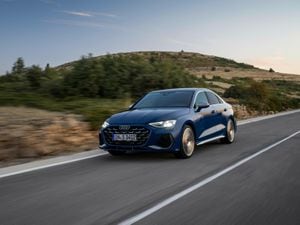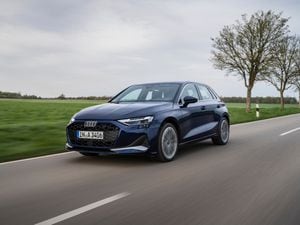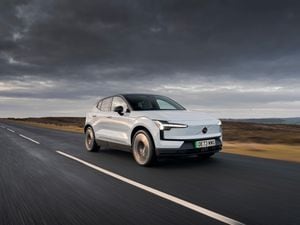The electric Renault Zoe offers impressive range for a small price tag
With its new Z.E.40 battery, the Renault Zoe now boasts a real-world range of up to 184 miles. Simon Davis puts it to the test
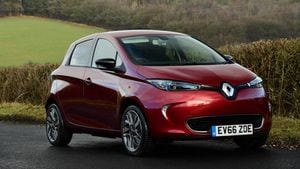
What is it?
You could think of the Renault Zoe as the rather hilarious little Twizy quadricycle’s older sister. Whereas the Twizy is has its limitations, the Zoe is a proper car with five seats, a boot and a useable real-world electric driving range.
Not only is the Zoe a family car, it’s also a zero-emissions vehicle, meaning it qualifies for the government’s full £4,500 plug-in car grant. This helps bring the Zoe’s price down to a lowly £14,245, but doesn’t include the mandatory monthly battery hire fee.
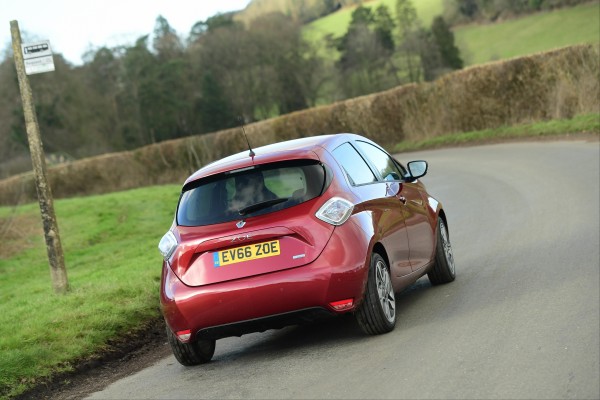
What’s new?
Renault first introduced the Zoe back in 2013. Since then, however, the electric car has been facelifted for the 2017 model year and gains a new 250-mile battery – the Z.E.40. There’s also the new Signature Nav top-level trim.
This new battery is the most important update for the Zoe, however, as it dramatically increases its appeal compared with its rivals. The 250-mile range is based on the New European Driving Cycle (NEDC), however, and Renault says that in the real world this will be closer to 184 miles in summer and 124 miles in the winter.
What’s under the bonnet?
Our test vehicle was fitted with Renault’s R90 electric motor. This unit develops a modest 91bhp and 220Nm of torque, which allows for a 0-60mph time 13.3 seconds and a top speed of 84mph. This means the Zoe is considerably slower than most conventional cars, as well as the Hyundai Ioniq Electric.
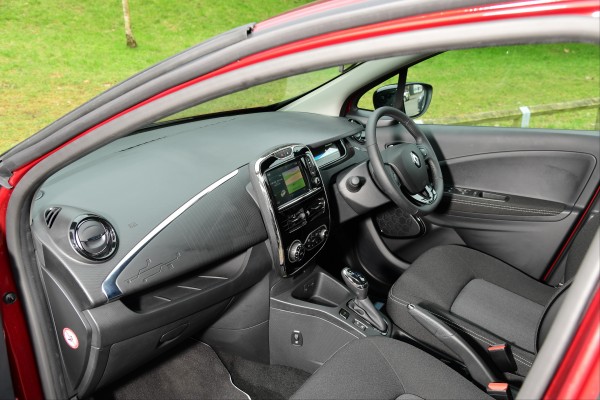
However, this won’t pose too much of a problem, as the Zoe will likely spend most of its time driving in busy urban environments. Here, the instant torque provided by the electric motor means you set off pretty quickly, so you won’t be holding any one up at the lights.
The Zoe comes as standard with a home-charging unit, so you’ll be able to replenish its batteries in as little as seven hours.
Obviously, the Zoe doesn’t emit any CO2 either, so you won’t have to worry about paying vehicle excise duty.
What’s it like to drive?
While the electric motor’s instant torque will get you up to 30mph in a timely fashion – which is ideal for inner-city driving – it takes a long time to reach open road speeds. This means the Zoe isn’t really cut out for long-distance motorway hauls, and its range will be a limiting factor too.
Around town, however, the Zoe is perfectly capable. There’s plenty of visibility afforded by the fairly high driving position, and its relatively small size means it’s easy to slot into tighter spaces.
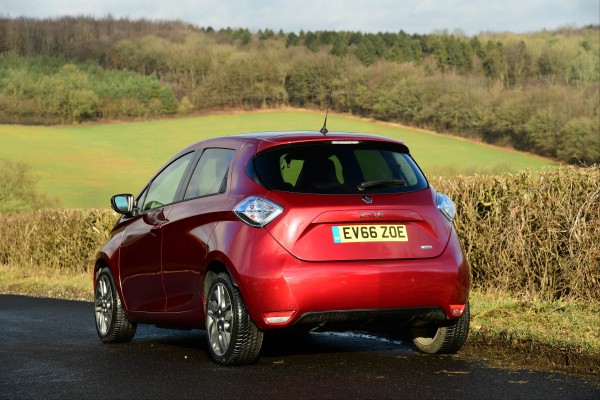
The Zoe isn’t exactly amazing dynamically, though. It’s quite a tall car, so there’s a fair amount of lean through the corners when pressing on. The steering is also rather vague, and it will take a bit of time to get used to the regenerative brakes, which are rather grabby. However, if you stick to low-speed city driving, you’ll find the Zoe is comfortable and incredibly easy to drive.
How does it look?
To our eyes at least, the Zoe is quite a pretty little car. There’s something very chic about its looks – which is no doubt a by-product of its French roots. With the possible exception of the Tesla Model S, the Zoe is actually one of the most attractive-looking EVs on sale today. While it may also be one of the most affordable, it certainly doesn’t look “cheap” and will look right at home when parked up on a fashionable high street.
What’s it like inside?
Although the Zoe might look good from the outside, unfortunately the same can’t be said of its interior. That low price point starts to make itself apparent in the cabin, where you’ll find plenty of cheap and scratchy plastic surfaces. Compared with the likes of the Hyundai Ioniq Electric, the Zoe’s low-rent interior is a bit of a let-down.
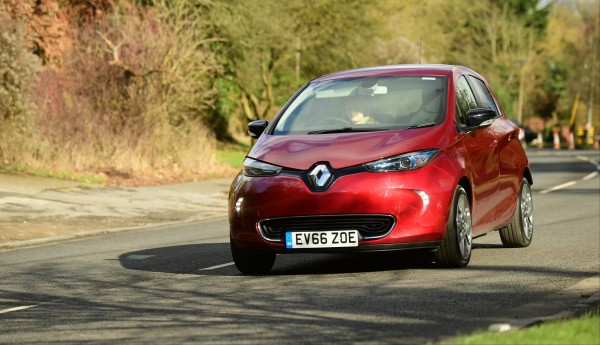
As far as space is concerned, though, it does claim back some points. Two adults will be able to sit in relative comfort in the back seats – although they might be a bit squashed if sat behind taller front passengers. Boot space stands at 338 litres, which is decent but falls short of its rivals. By comparison, the Hyundai Ioniq and Nissan Leaf offer 350 litres and 370 litres respectively.
What’s the spec like?
Standard equipment is fairly generous, with even entry-level models benefitting from Renault’s R-Link infotainment system and satellite navigation. Our mid-range Dynamique Nav specification test car came equipped with a hands-free key card, DAB radio, Bluetooth audio streaming and rear parking sensors.
Prices for the Renault Zoe start at just £14,245 – which is considerably lower than rivals such as the Hyundai Ioniq and Nissan Leaf, which start at £24,995 and £16,680 respectively. However, that price tag does not include the mandatory monthly battery hire fee, which costs upwards of £59 per month based on mileage.
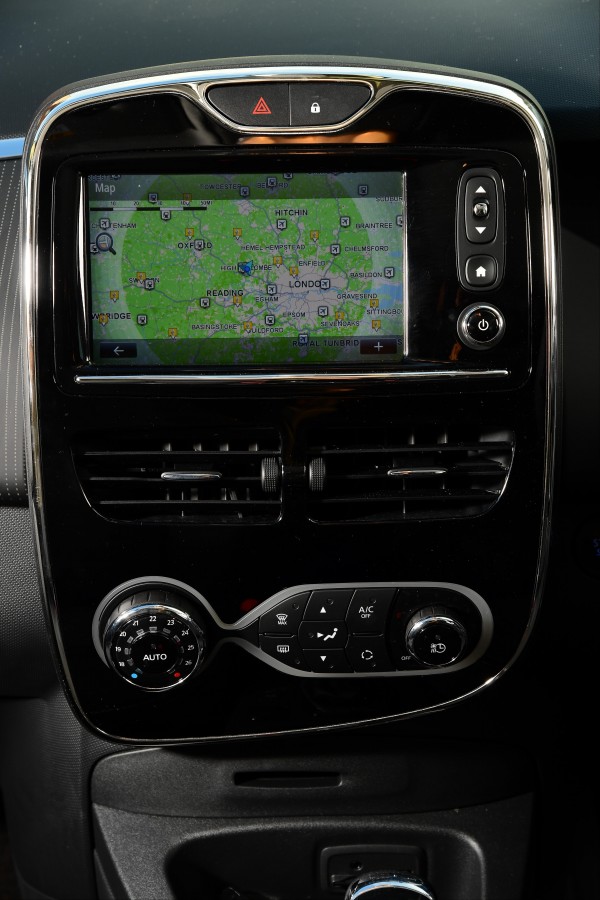
If you would prefer to buy the Zoe and battery outright, you’ll need to part with £19,845 for the entry-level i-Expression Nav model.
Verdict
The Zoe earns points for being one of the most affordable electric cars on the market. It’s not going to amaze you with its dynamic abilities, but as an urban daily driver its superior range, practical interior and attractive looks make it hard to beat in this segment.
FACTS AT A GLANCE
Model: Renault Zoe Dynamique Nav R90 Z.E.40
Price as tested: £19,295 (not including £59 per month battery hire)
Engine: R90 Electric motor with Z.E.40 battery
Power (bhp): 91
Torque (Nm): 220
Max speed (mph): 84mph
0-60mph: 13.3 seconds
Charging time (domestic): 7-8 hours
Charging time (fast charger): 1h 40min to 80% charge
Range (NEDC): 250 miles
Emissions: (g/km): 0

